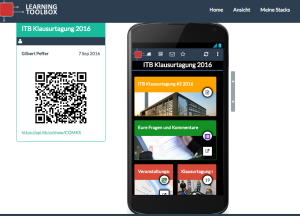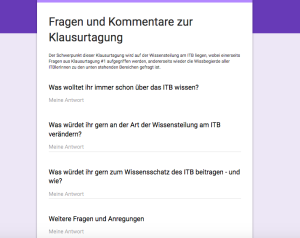Wrapping up the Learning Layers experience – Part Two: Celebrating research & development dialogue with practitioners
With my latest blog I started a series of posts to wrap up the experiences of our EU-funded Learning Layers (LL) project. As I mentioned,we are in the phase of concluding our project. For us this is not just a matter of presenting our results with individual reports or demonstrating the achievements with individual tools. An essential part of this phase is to reflect on our experiences on the whole – what have we learned and achieved together. I started my reflections with the theme ‘digital transformation’ and how we have experienced it as lived practice and as research challenge. In this second post I try to describe, how this has characterised our work as researcher partners in research & development dialogue with our application partners in the Construction pilot of the LL project.
The process dynamics: Research & Development dialogue with multiple activities and many iterations
Shortly before the start of the project I recorded with our colleague Graham Attwell a video interview in which he presented some key ideas for the forthcoming project. Graham made a realistic point that
‘in the beginning the users don’t know, what the technical developers can offer them and the developers don’t know why and how the users would use their products’.
Graham saw the great chance of the LL project in turning such ‘don’t know – don’t know’ constellation into a ‘getting to know – getting to know’ type of dialogue. This was his anticipation in Spring 2012.
The real life in the construction pilot turned to be far more colourful. In Graham’s reflection the technical partners and research partners were treated as one group. And finding a common design idea and ways to put it into practice didn’t appear as complicated as it turned out to be.
Altogether, the process dynamic that led to the development of Learning Toolbox (LTB) was characterised by a long search for an appropriate design idea that makes sense for the trainers and apprentices in construction sector training centre Bau-ABC. This process did not lead to a quick listing of requirements for external software developers to do their job. Instead, the lack of developer resources was compensated by co-design workshops and further iterations involving research partners, intermediate technicians and application partners – who were preparing the grounds for software developers to enter a process of research & development (R&D) dialogue. Thus, the key characteristics and expected functions of LTB were in a ‘getting to know – getting to know’ type of dialogue – but the developers and their know-how had to be integrated into this process.
The multiple roles of accompanying research during the process
Concerning the role of our ITB team (Institut Technik & Bildung) in this process, the best term is ‘accompanying research‘. This concept arises from German innovation programs in working life and in vocational education and training (VET). Originally two German concepts have been used, which may have somewhat different connotations – Wissenschaftliche Begleitung (scientific accompaniment) and Begleitforschung (accompanying research). The former might be seen as a more open approach, whilst the latter may emphasise a more focused research design. In the innovation programs in working life such research was used to monitor, whether the innovations improved the quality of working life. In VET-related pilot projects (Modellversuche) the role of research was to monitor and evaluate the implementation of pedagogic innovations. In both cases the accompanying researchers tended to have co-participative and co-shaping roles. However, the responsibility on the success of pilots was on the application partner organisations.
Concerning the LL project and the co-design process of Learning Toolbox (LTB), the role of the accompanying research team of ITB was even more co-participative and co-shaping than that of the predecessors. Moreover, the research challenges was also more open – the researchers had to grasp the challenges in the course of the interactive and dialogue-oriented process. When the process moved on to the active deployment of the LTB, the researchers were needed as facilitators of the dialogue and as co-tutors in the training activities. In the final phase the accompanying researchers were needed as counterparts of evaluation researchers – to interpret together the findings. All this can at best be characterised with the term ‘agile accompanying research‘.
The role of training interventions as capacity-building in the field
In the light of the above it is essential to emphasise that the co-design activities and the research interventions were not enough to give the process its strength. A crucial part was played by the training interventions at different phases of the process. In the earlier phase of co-design process the ITB and Pontydysgu teams arranged a series of Multimedia training workshops for voluntary trainers of Bau-ABC Rostrup. At a later phase the ITB and Pontydysgu teams together with advanced Bau-ABC colleagues organised the Theme Room training campaign (see my blogs of November and December 2015). These training interventions were not merely general orientation or user-training for certain tools. On the whole these training interventions were capacity-building for Bau-ABC as a whole organisation and for the trades involved.
Here it is essential to emphasise that the training interventions were essential dialogical elements in the process. All parties were engaged as learners – trying to find out, in what ways digital media and web tools can be introduced into construction work and into workplace-based training. And all this supported the development and deployment of the LTB as an integrative toolset to work with.
– – –
I think this is enough of our experiences with research & development dialogue in the LL project and in the Construction pilot – in particular with the application partner Bau-ABC. In the next posts I will look more closely to the challenges to show impact and to draw scenarios on the basis of such experience.
More blogs to come …


